Digital Customization for Product Design and Manufacturing: A Case Study within the Furniture Industry
Abstract
:1. Introduction
2. State of the Art
3. Application Concept
4. Application Development
4.1. 3D Modeling Algorithm
4.2. Assembly Instructions Algorithm
5. Results
- Technical drawings that include all dimensions of the furniture;
- Bill of materials (BOM) in PDF format;
- Instructions documents for assembling the furniture;
- STEP files for data transfer via a neutral file format;
- STL files of prototyping;
- Material selected and weight estimation;
- Photorealistic images of the final product.
6. Conclusions
Author Contributions
Funding
Data Availability Statement
Conflicts of Interest
References
- Kyratsis, P.; Manavis, A.; Davim, J.P. Computational Design and Digital Manufacturing; Springer Nature: Berlin/Heidelberg, Germany, 2023; pp. 82–91. [Google Scholar]
- Manavis, A.; Kyratsis, P. A computational study on product shape generation to support brand identity. Int. J. Mod. Manuf. Technol. 2021, 13, 115–122. [Google Scholar]
- Manavis, A.; Kakoulis, K.; Kyratsis, P. A Brief Review of Computational Product Design: A Brand Identity Approach. Machines 2023, 11, 232. [Google Scholar] [CrossRef]
- Manavis, A.; Minaoglou, P.; Feticides, L.; Efkolidis, N.; Kyratsis, P. Computational Customised Shoe-Sole Design: A Branding-based Approach. In Proceedings of the V International Conference Contemporary Trends and Innovations in the Textile Industry, Belgrade, Serbia, 14–15 September 2023. [Google Scholar]
- Hamza Hamad, S. The Influence of Parametric Design Tools on Increasing Creativity in the Furniture Design Process. Eurasian J. Sci. Eng. 2020, 6, 199–211. [Google Scholar]
- Jiang, Y.; Zhou, M.; Liu, Q.; Xia, B. Parametric design experiment of cultural and creative patterns based on Grasshopper plug-in. In Proceedings of the Seventh International Conference on Mechatronics and Intelligent Robotics (ICMIR 2023), Kumming, China, 16–18 June 2023. [Google Scholar]
- Efstathiadis, A.; Symeonidou, I.; Tsongas, K.; Tzimtzimis, E.K.; Tzetzis, D. 3D Printed Voronoi Structures Inspired by Paracentrotus lividus Shells. Designs 2023, 7, 113. [Google Scholar] [CrossRef]
- Manavis, A.; Minaoglou, P.; Tzetzis, D.; Efkolidis, N.; Kyratsis, P. Computational design technologies for interior designers: A case study. In IOP Conference Series: Materials Science and Engineering; IOP Publishing: Bristol, UK, 2021; Volume 1009, No. 1; p. 012037. [Google Scholar]
- Kán, P.; Kaufmann, H. Automated interior design using a genetic algorithm. In Proceedings of the 23rd ACM Symposium on Virtual Reality Software and Technology, Gothenburg, Sweden, 8–10 November 2017. [Google Scholar]
- Chen, J.; Shao, Z.; Hu, B. Generating interior design from text: A new diffusion model-based method for efficient creative design. Buildings 2023, 13, 1861. [Google Scholar] [CrossRef]
- Gutai, A.; Dukić, V.; Anderla, A.; Sladojević, S.; Mirković, M. Drawing Automation Approach using Solidworks API. In Proceedings of the 19th International Scientific Conference on Industrial Systems IoT Technologies, Novi Sad, Serbia, 4–6 October 2023. [Google Scholar]
- Leite, R.M.; Celani, G. Dimensional mass customization of a flexible furniture system. In Proceedings of the SIGraDi 2020, Online, 18–20 November 2020. [Google Scholar]
- Suzić, N.; Stevanov, B.; Ćosić, I.; Anišić, Z.; Sremčev, N.; Suzić, N.; Sremčev, N. Customizing products through application of group technology: A case study of furniture manufacturing. J. Mech. Eng. 2012, 58, 724–731. [Google Scholar] [CrossRef]
- Anderson, C.; Bailey, C.; Heumann, A.; Davis, D. Augmented space planning: Using procedural generation to automate desk layouts. Int. J. Archit. Comput. 2018, 16, 164–177. [Google Scholar] [CrossRef]
- Wang, Z.; Song, P.; Pauly, M. State of the art on computational design of assemblies with rigid parts. Comput. Graph. Forum 2021, 40, 633–657. [Google Scholar] [CrossRef]
- Fu, C.W.; Song, P.; Yan, X.; Yang, L.W.; Jayaraman, P.K.; Cohen-Or, D. Computational interlocking furniture assembly. ACM Trans. Graph. 2015, 34, 1–11. [Google Scholar] [CrossRef]
- Kitiyanun, K.; Kongsong, W.; Tuprakay, S.; Tuprakay, S.R.; Harnphanich, B.; Poowarakulchai, C.; Thammapornram, C. Mechanical properties of parallel TDG bamboo laminated columns with tough and grove joints. Designs 2022, 6, 107. [Google Scholar] [CrossRef]
- Yan, W.; Zhao, D.; Mehta, A. Fabrication-aware design for furniture with planar pieces. Robotica 2023, 41, 48–73. [Google Scholar] [CrossRef]
- Xu, X.; Xiong, X.; Yue, X.; Zhang, M. A Parametric Optimized Method for Three-Dimensional Corner Joints in Wooden Furniture. Forests 2023, 14, 1063. [Google Scholar] [CrossRef]
- Gros, J. Furniture industry has to reconsider all products–call it customization design. In World Congress on Mass Customization and Personalization, HKUST, Hong Kong University of Science and Technology; Hong Kong University: Hong Kong, China, 2001. [Google Scholar]
- Felek, S.Ö. Parametric modelling in furniture design a case study: Two door wardrope. Eur. J. Res. Dev. 2022, 2, 62–74. [Google Scholar] [CrossRef]
- Markusiewicz, J.; Balerdi, A.G. Using Machine Learning to simulate subjective opinions in design. In Proceedings of the Conference eCAADe 2020, Technische Universität, Berlin, Berlin, Germany, 16–17 September 2020. [Google Scholar]
- Demarco, F.; Bertacchini, F.; Scuro, C.; Bilotta, E.; Pantano, P. The development and application of an optimization tool in industrial design. Int. J. Interact. Des. Manuf. 2020, 14, 955–970. [Google Scholar] [CrossRef]
- Mesa, D.; Renda, G.; Gorkin, R., III; Kuys, B.; Cook, S.M. Implementing a Design Thinking Approach to De-Risk the Digitalisation of Manufacturing SMEs. Sustainability 2022, 14, 14358. [Google Scholar] [CrossRef]
- Hu, W.; Liu, N.; Guan, H. Optimal design of a furniture frame by reducing the volume of wood. Drewno 2019, 62, 85–97. [Google Scholar] [CrossRef]
- Bumgardner, M.S.; Nicholls, D.L. Sustainable practices in furniture design: A literature study on customization, biomimicry, competitiveness, and product communication. Forests 2020, 11, 1277. [Google Scholar] [CrossRef]
- Kuys, J.; Al Mahmud, A.; Kuys, B. A Case Study of University–Industry Collaboration for Sustainable Furniture Design. Sustainability 2021, 13, 10915. [Google Scholar] [CrossRef]
- Lee, B.; Cho, M.; Min, J.; Saakes, D. Posing and Acting as Input for Personalizing Furniture. In Proceedings of the 9th Nordic Conference on Human-Computer Interaction, Gothenburg, Sweden, 23–27 October 2016; pp. 1–10. [Google Scholar]
- Silva, T.F.; Marques, J.P. Human-Centered Design for Collaborative Innovation. In ISPIM Conference Proceedings; The International Society for Professional Innovation Management (ISPIM): Manchester, UK, 2020; pp. 1–25. [Google Scholar]
- Aydin, M. Additive manufacturing: Is it a new era for furniture production. J. Mech. Eng. Autom. 2015, 5, 38–347. [Google Scholar]
- Aydın, T.Y. Do it yourself furniture: Part A-Designing fittings for an easy to manufacture hybrid chair. Mobilya ve Ahşap Malzeme Araştırmaları Dergisi 2022, 5, 50–60. [Google Scholar] [CrossRef]
- Ma, J.; Li, Z.; Zhao, Z.L.; Xie, Y.M. Creating novel furniture through topology optimization and advanced manufacturing. Rapid Prototyp. J. 2021, 27, 1749–1758. [Google Scholar] [CrossRef]
- Kan, P.; Kurtic, A.; Radwan, M.; Rodriguez, J.M.L. Automatic interior Design in Augmented Reality Based on hierarchical tree of procedural rules. Electronics 2021, 10, 245. [Google Scholar] [CrossRef]
- E Costa, E.C.; Jorge, J.; Duarte, J. Comparing digital tools for implementing a generative system for the design of customized tableware. Comput. Aided. Des. Appl. 2019, 16, 803–821. [Google Scholar] [CrossRef]
- Figueiredo, B.; Castro e Costa, E.; Duarte, J.P.; Krüger, M. Digital Temples: A Shape Grammar to generate sacred building according to Alberti’s theory. In Proceedings of the Future Traditions—1st eCAADe Regional International Workshop, Porto, Portugal, 4–6 April 2013. [Google Scholar]
- Novak, J.I. A parametric method to customize surfboard and stand up paddle board fins for additive manufacturing. Comput. Aided. Des. Appl. 2020, 18, 297–308. [Google Scholar] [CrossRef]
- Chen, X.; McKay, A. Package shape design principles to support brand identity. In Proceedings of the 14th IAPRI World Conference on Packaging, Stockholm, Sweden, 13–16 June 2004; pp. 1–14. [Google Scholar]
- Burnap, A.; Hartley, J.; Pan, Y.; Gonzalez, R.; Papalambros, P.Y. Balancing design freedom and brand recognition in the evolution of automotive brand styling. Des. Sci. 2016, 2, e9. [Google Scholar] [CrossRef]
- Khan, S.; Gunpinar, E.; Moriguchi, M. Customer-Centered Design Sampling for CAD Products Using Spatial Simulated Annealing. Proc. CAD 2017, 17, 100–103. [Google Scholar]
- Garcia, S.; Menezes Leitão, A. Shape grammars as design tools: An implementation of a multipurpose chair grammar. Artif. Intell. Eng. Des. Anal. Manuf. AIEDAM 2018, 32, 240–255. [Google Scholar] [CrossRef]
- Manavis, A.; Kakoulis, K.; Efkolidis, N.; Kyratsis, P. Brand identity for product design through computational design techniques. Acta Tech. Napoc. Ser. Appl. Math. Mech. Eng. 2022, 65, 1221–1228. [Google Scholar]
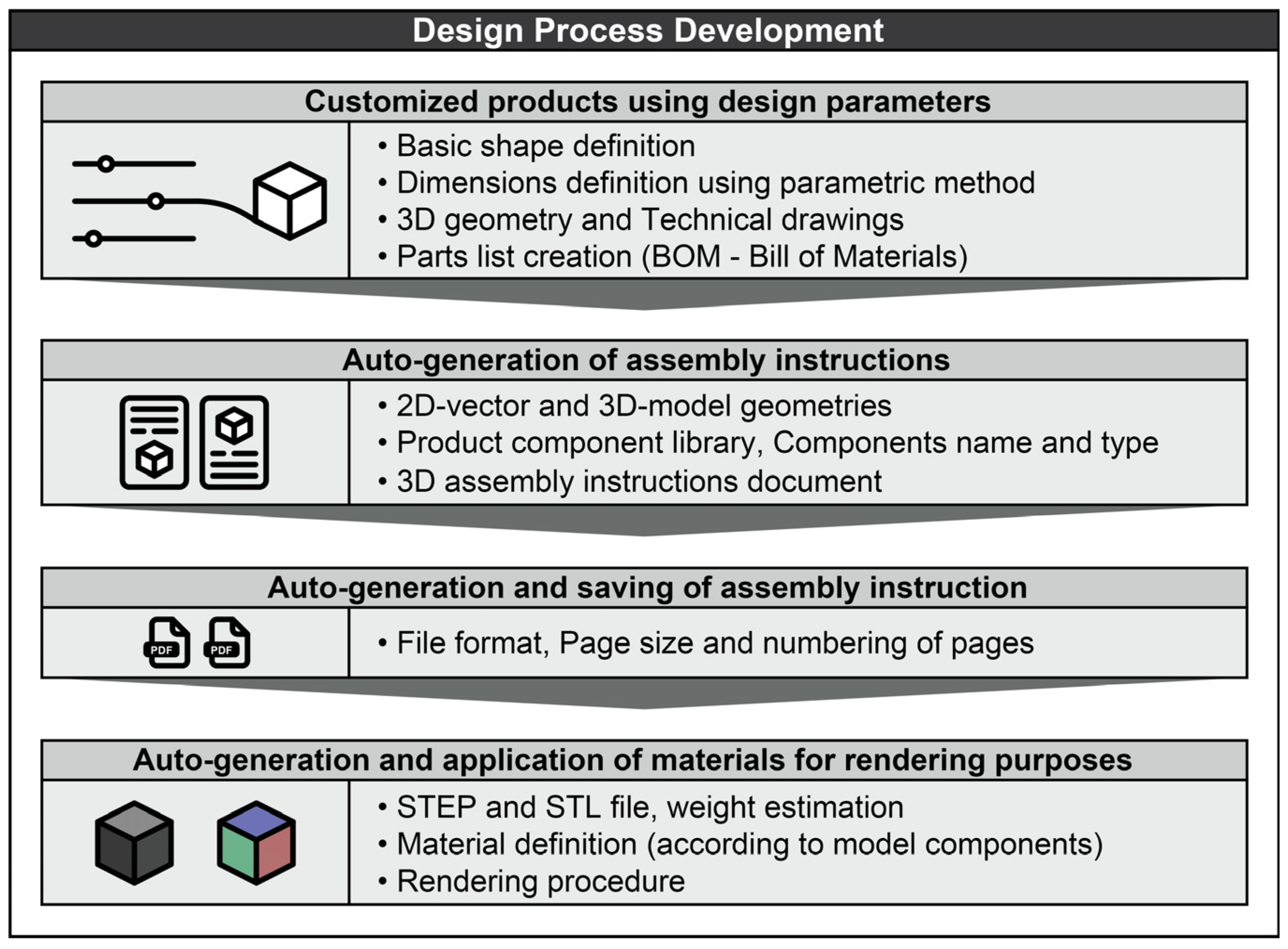

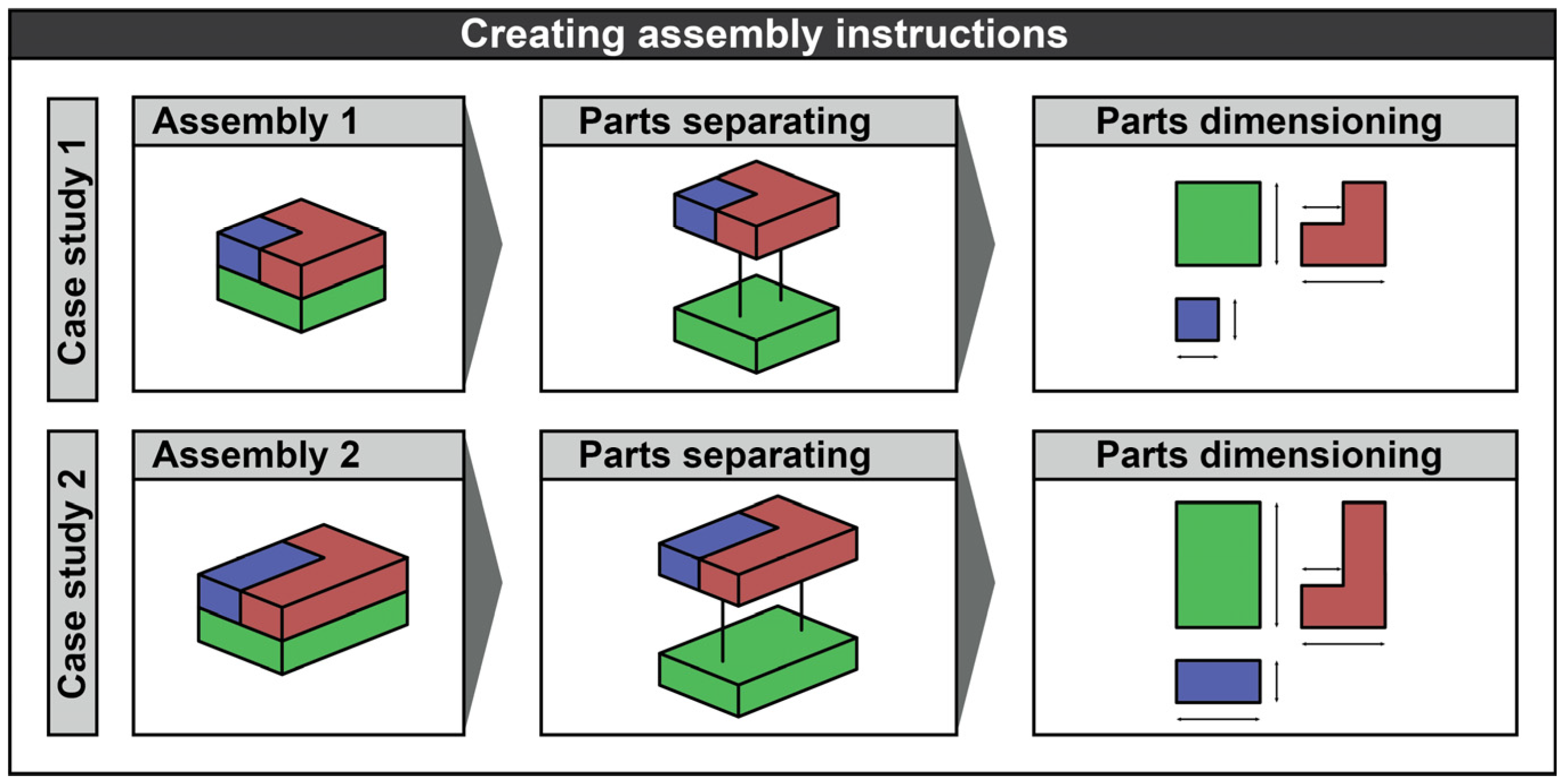
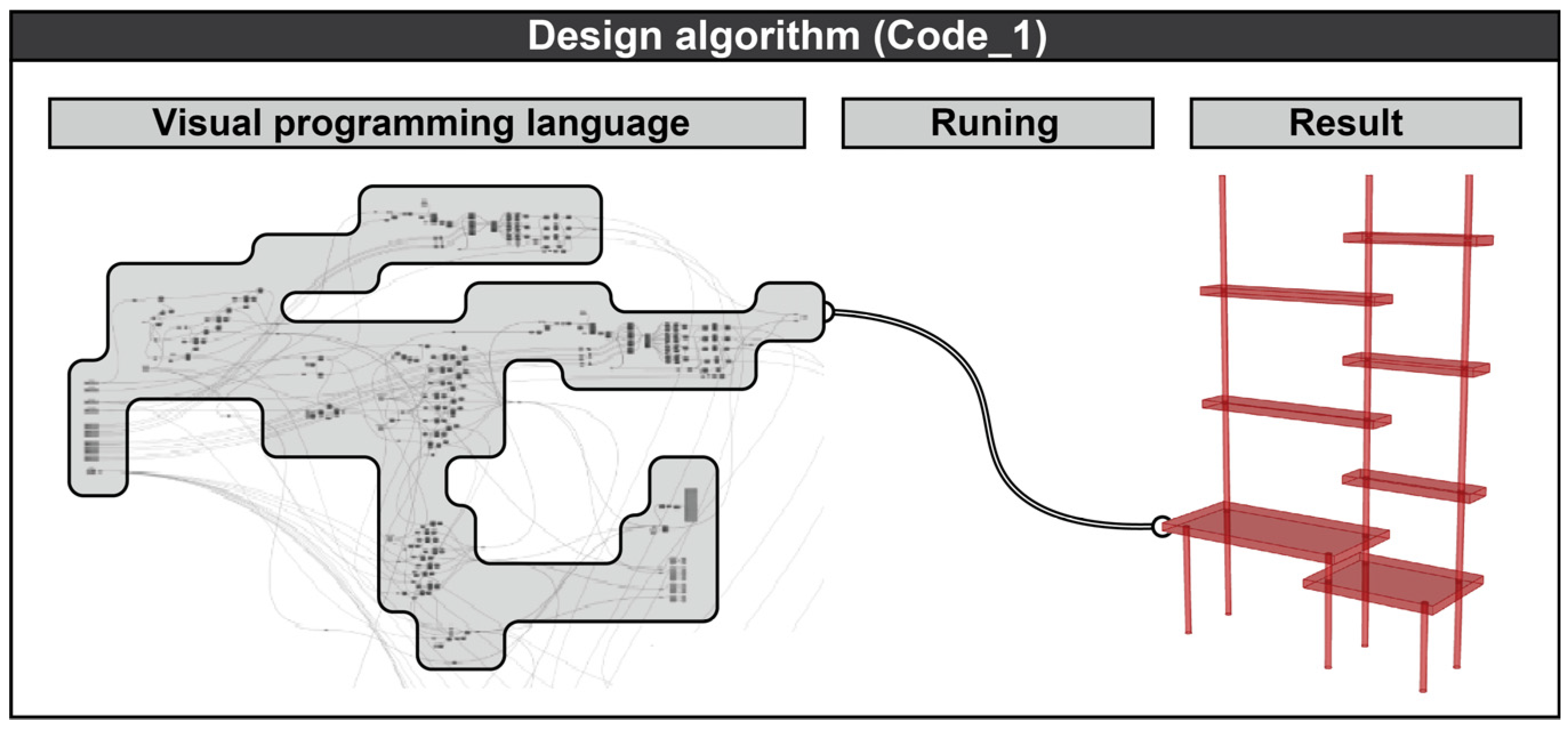
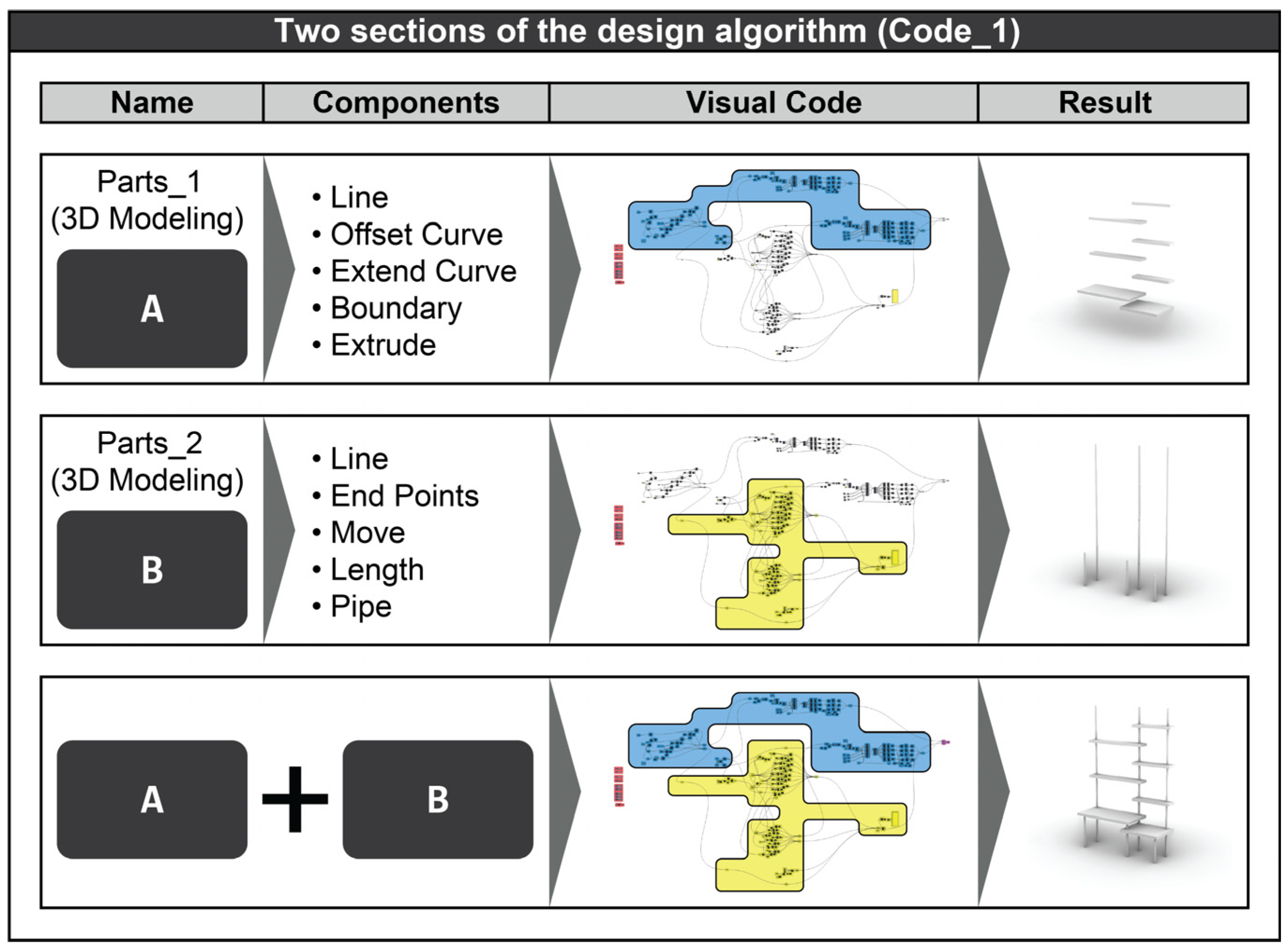
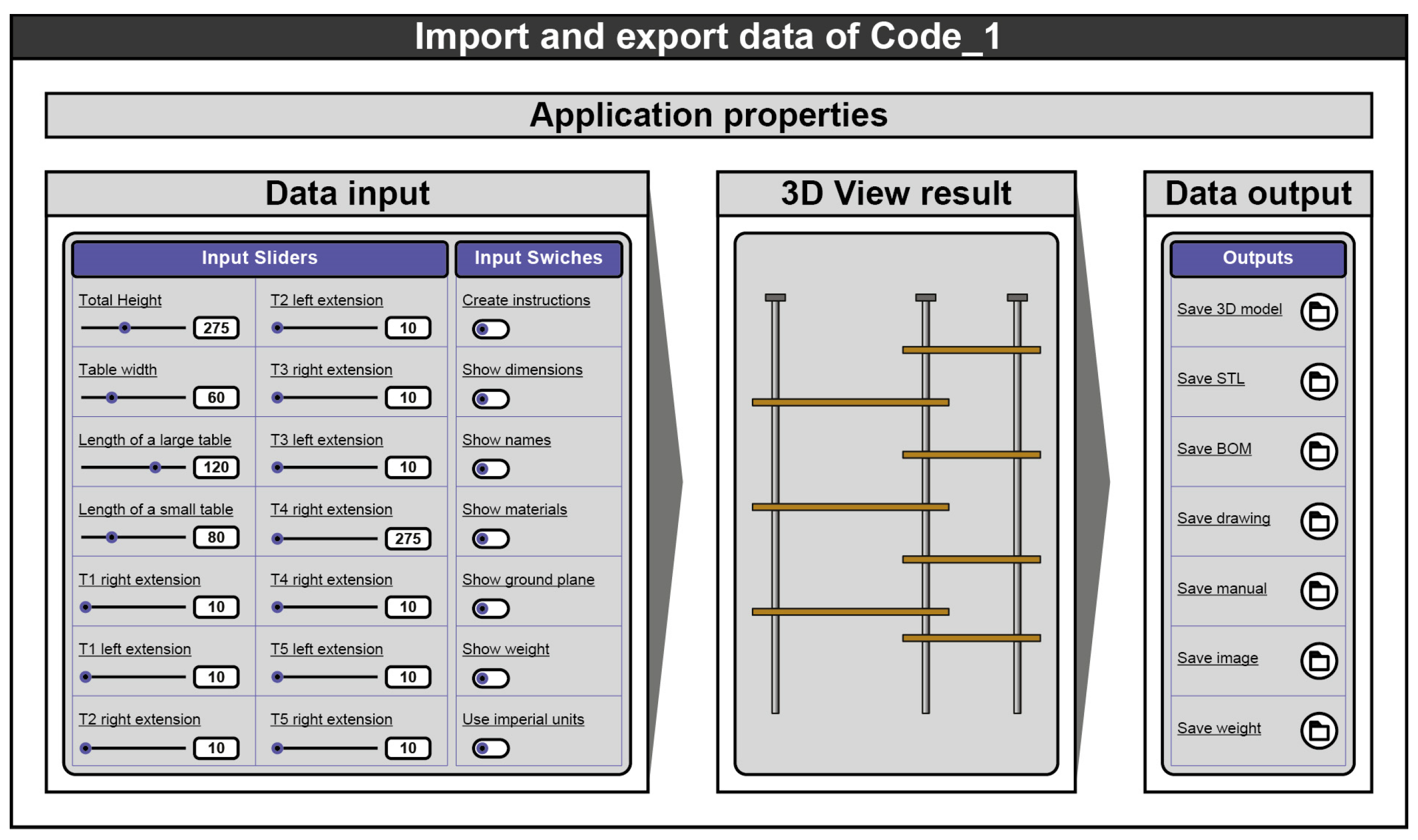
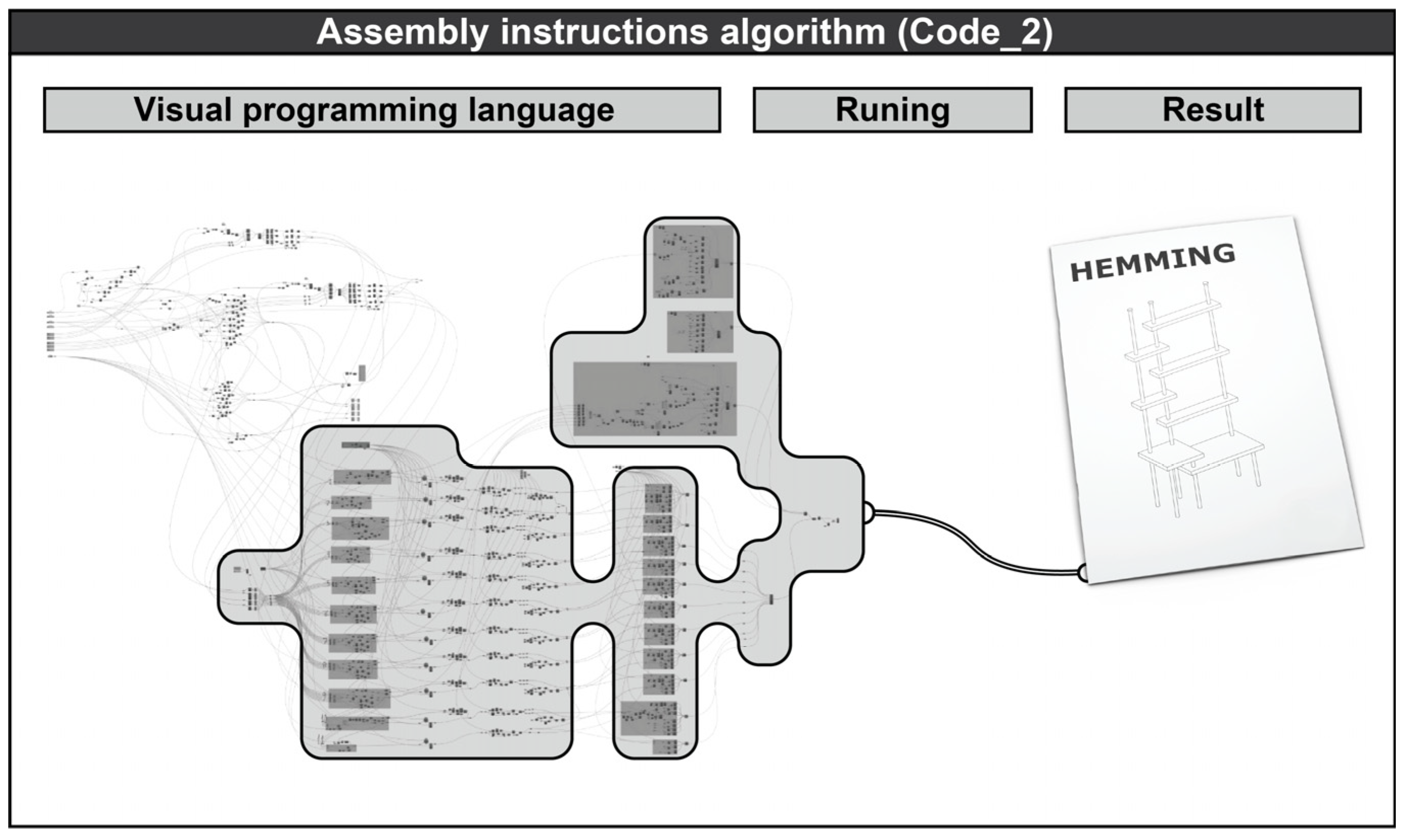
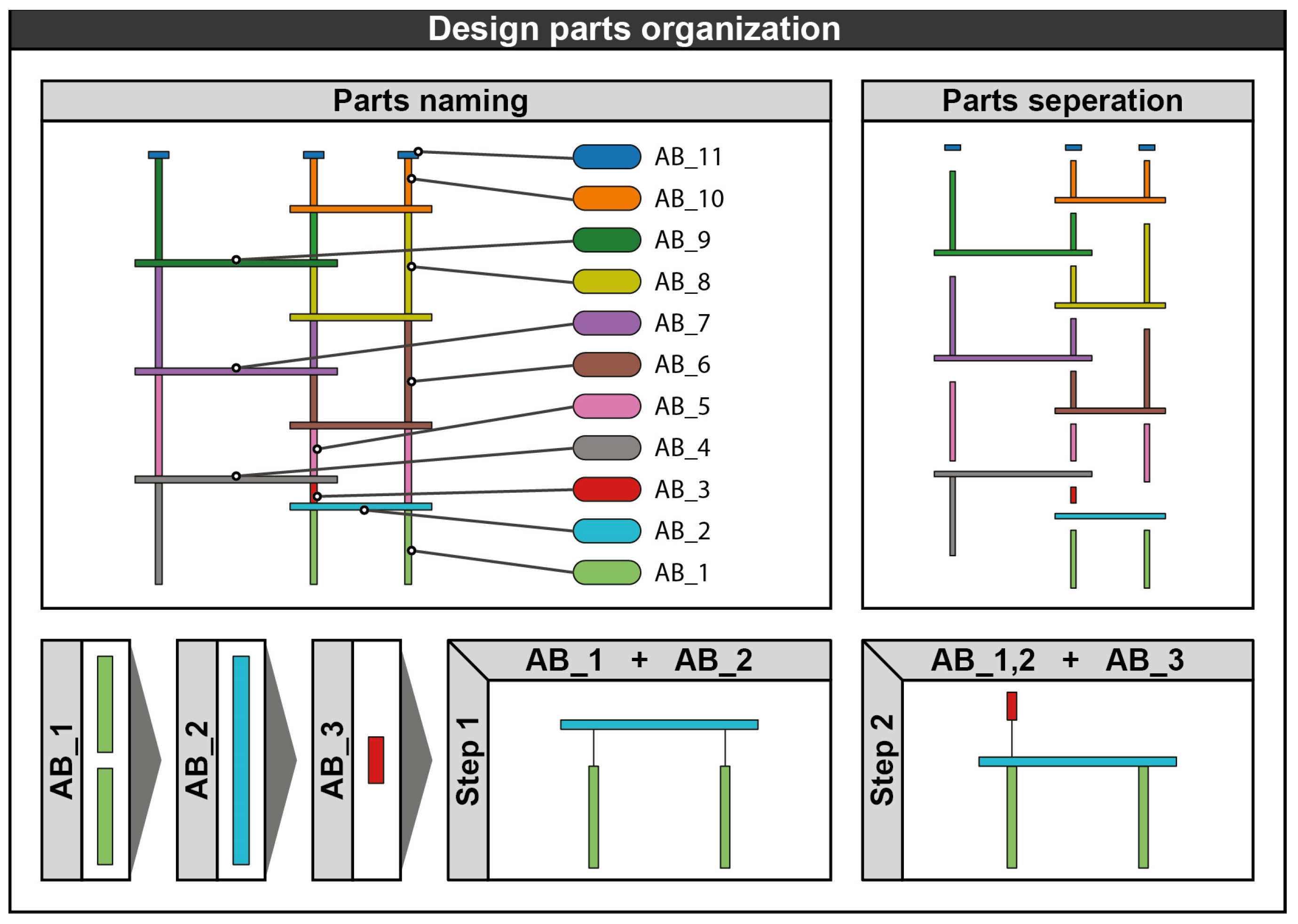


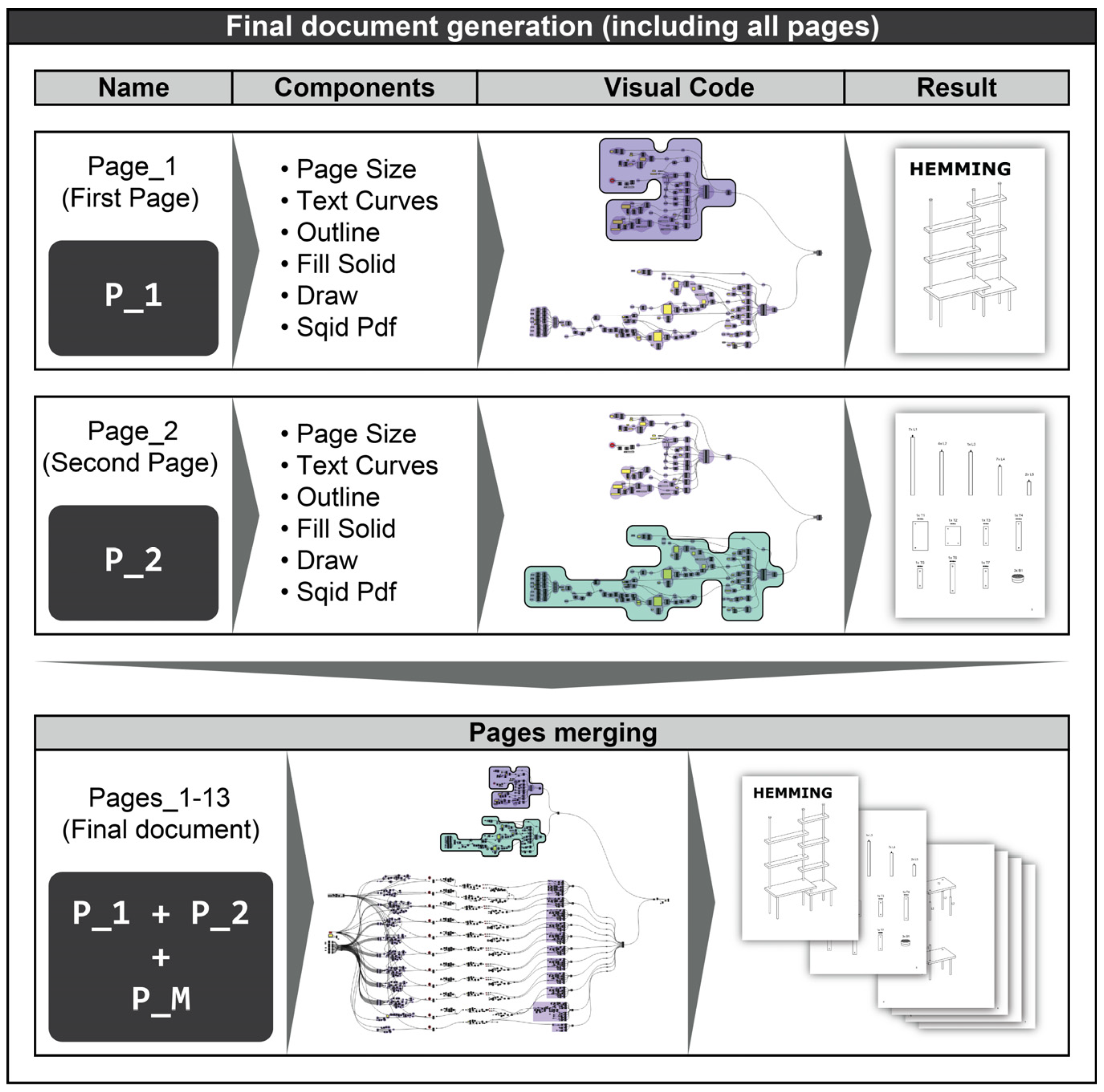

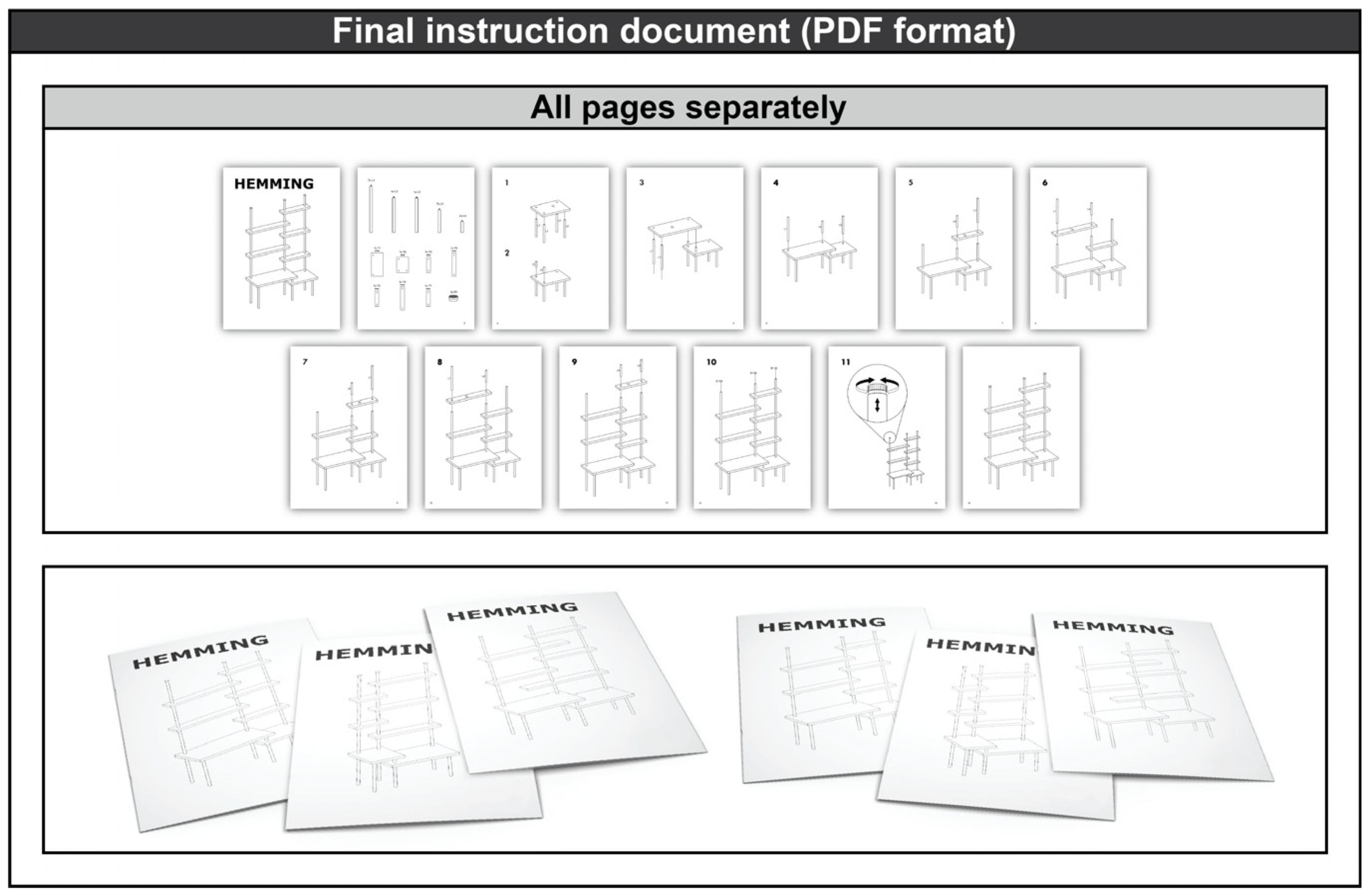
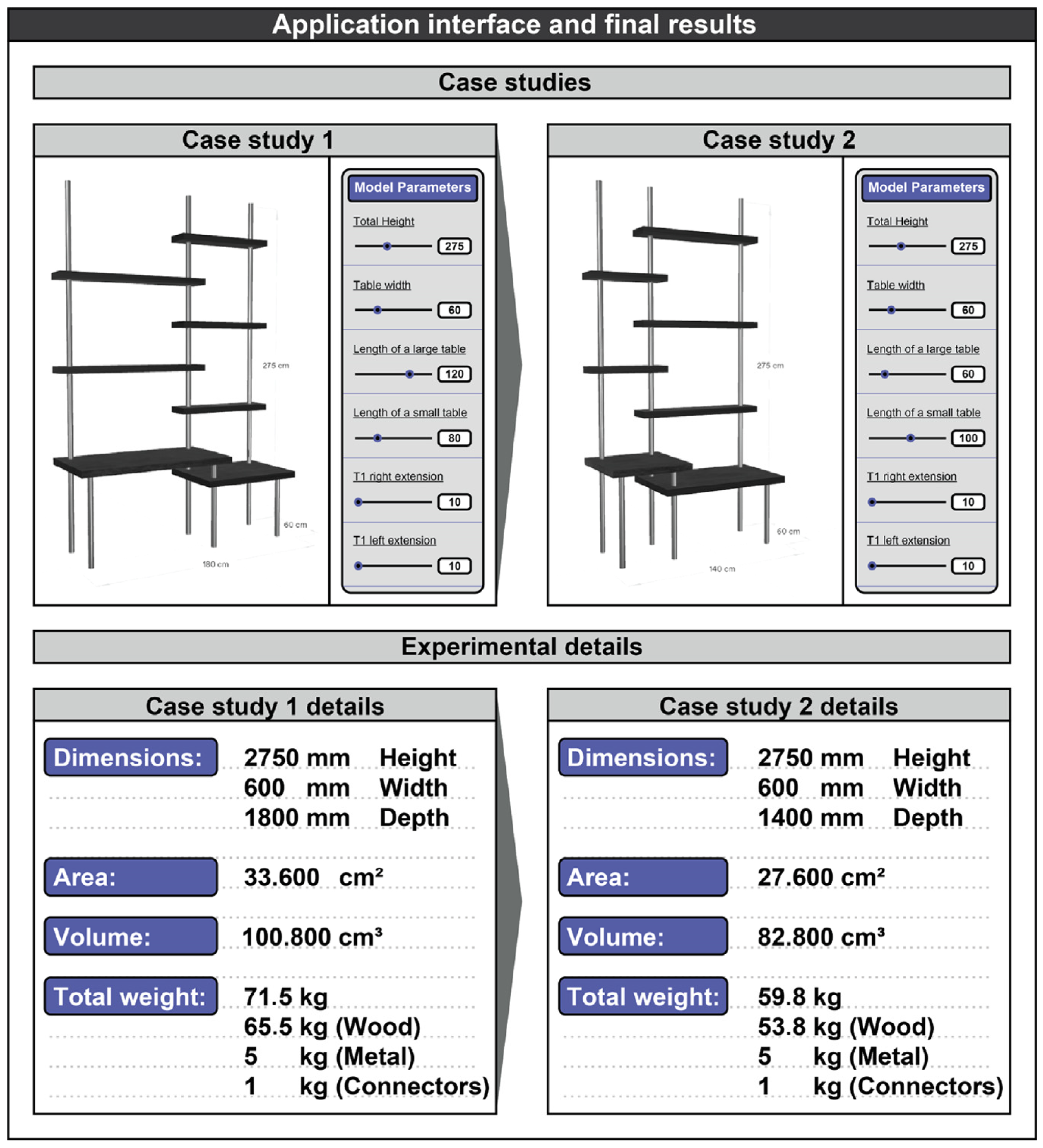
Disclaimer/Publisher’s Note: The statements, opinions and data contained in all publications are solely those of the individual author(s) and contributor(s) and not of MDPI and/or the editor(s). MDPI and/or the editor(s) disclaim responsibility for any injury to people or property resulting from any ideas, methods, instructions or products referred to in the content. |
© 2024 by the authors. Licensee MDPI, Basel, Switzerland. This article is an open access article distributed under the terms and conditions of the Creative Commons Attribution (CC BY) license (https://creativecommons.org/licenses/by/4.0/).
Share and Cite
Manavis, A.; Minaoglou, P.; Efkolidis, N.; Kyratsis, P. Digital Customization for Product Design and Manufacturing: A Case Study within the Furniture Industry. Electronics 2024, 13, 2483. https://doi.org/10.3390/electronics13132483
Manavis A, Minaoglou P, Efkolidis N, Kyratsis P. Digital Customization for Product Design and Manufacturing: A Case Study within the Furniture Industry. Electronics. 2024; 13(13):2483. https://doi.org/10.3390/electronics13132483
Chicago/Turabian StyleManavis, Athanasios, Prodromos Minaoglou, Nikolaos Efkolidis, and Panagiotis Kyratsis. 2024. "Digital Customization for Product Design and Manufacturing: A Case Study within the Furniture Industry" Electronics 13, no. 13: 2483. https://doi.org/10.3390/electronics13132483
APA StyleManavis, A., Minaoglou, P., Efkolidis, N., & Kyratsis, P. (2024). Digital Customization for Product Design and Manufacturing: A Case Study within the Furniture Industry. Electronics, 13(13), 2483. https://doi.org/10.3390/electronics13132483






